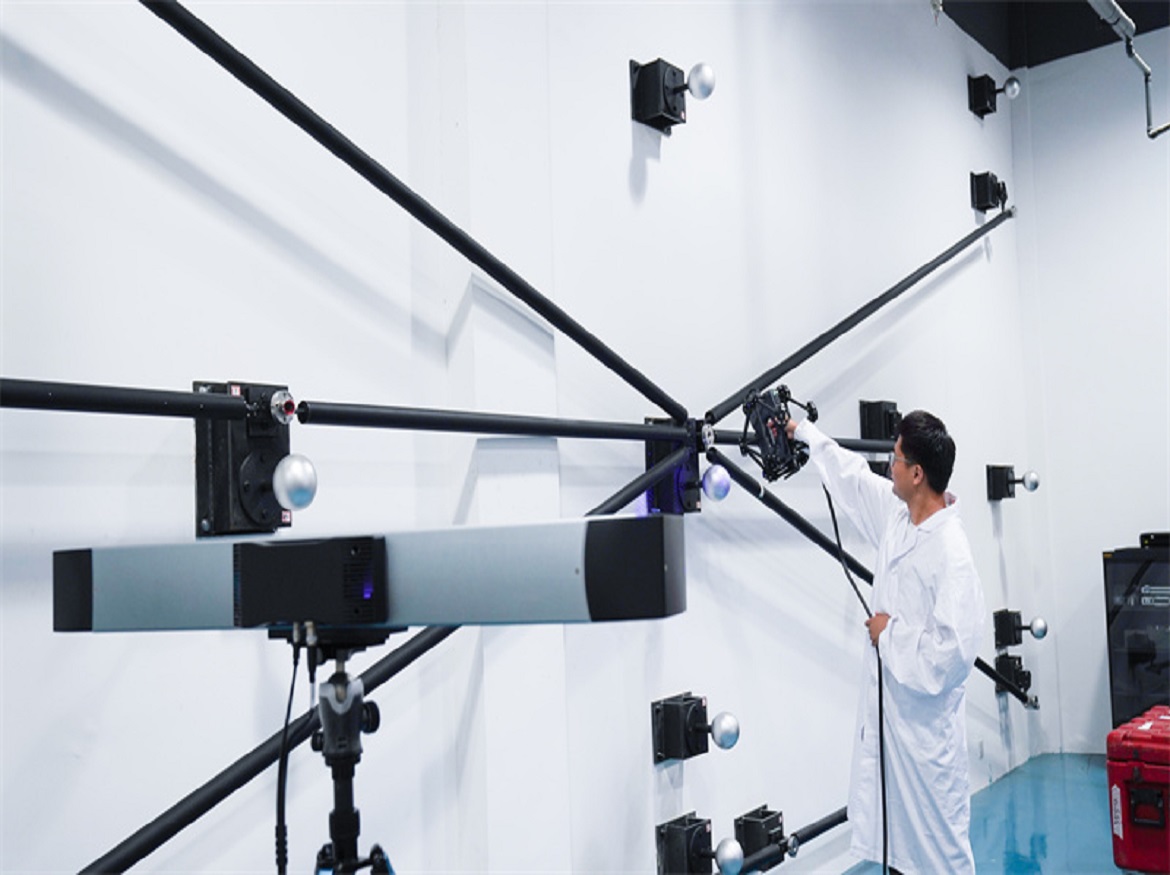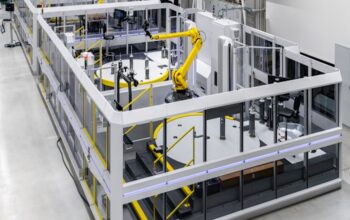Accuracy is a topic that comes up frequently while discussing 3D scanners. How do you interpret the word “accuracy”? Does it denote accuracy, excellence, or authenticity? This essay is for you if you agree that this idea is a little hazy.
Here, we will discuss what accuracy is, how precision relates to it, how it influences measurement accuracy, and how to quickly select a metrology-grade 3D scanner that meets your requirements for accuracy.
Accuracy VS Precision VS Volumetric Accuracy
Accuracy and precision are crucial factors to take into account while taking measurements since they show how closely a number is measured to a known or established value. These two ideas are essential for figuring out how reliable the measurement is.
The accuracy of a measurement is how closely the results match the actual value. ISO refers to this as truth. In contrast, ISO describes accuracy as a result of both random and systematic error. Accurate data is unquestionably essential for applications like industrial manufacturing and car tuning.
Precision is sometimes referred to as repeatable measurement accuracy, which refers to the consistency (conformity) of measured values taken under identical conditions and repeated measurements. A good player can regularly strike the centre area, much like an athlete shooting at a target. The 3D scanner’s accuracy can be compared to a target’s hitting area, and its precision to the consistency of many strikes.
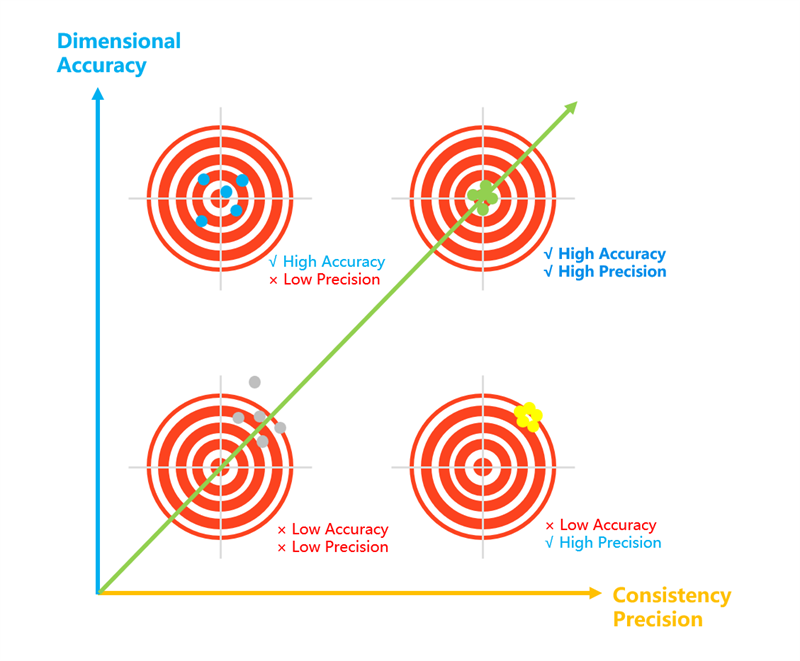
Accuracy VS Precision
Volumetric accuracy is also present during alignment. During the scanning process, there is a linear cumulative error that can be written as beginning accuracy plus cumulative alignment error. Part 3 will go into more information about it and how we should get rid of this mistake.
Factors Affecting Measurement Accuracy
The accuracy of a 3D scanner can vary somewhat depending on a number of variables, including temperature, data integrity, algorithms, and scanning angles, regardless of the manufacturer or market position. It’s critical to comprehend how to get the most trustworthy and exact 3D data while also preventing accuracy variations.
-
Temperature
It is essential to give the scanner time to warm up and maintain a steady temperature in order to guarantee optimum scanning accuracy. To attain the highest level of accuracy, calibration should be done after the temperature has stabilised. The most precise results will be obtained by warming up, stabilising the temperature, calibrating, and then scanning.
-
Data integrity
The correctness of the data is significantly influenced by the data’s integrity. The overall quality of the 3D information might be harmed by the use of incomplete data, which can result in inaccurate or skewed findings. In order to get the most accurate results, it is crucial to make sure the data is legitimate and full.
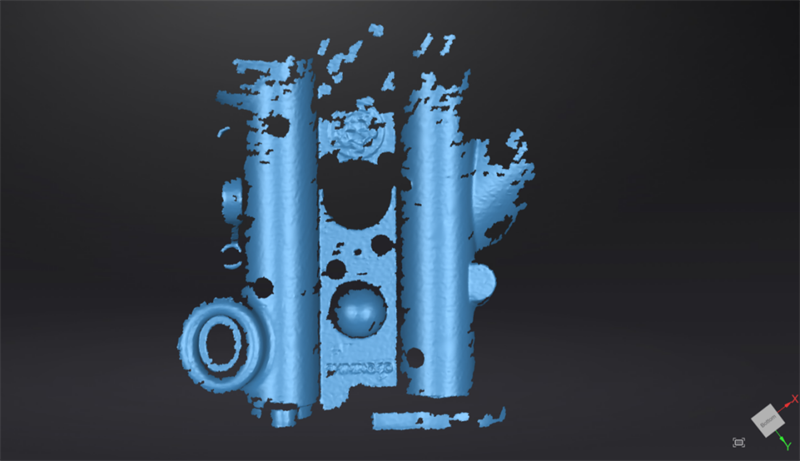
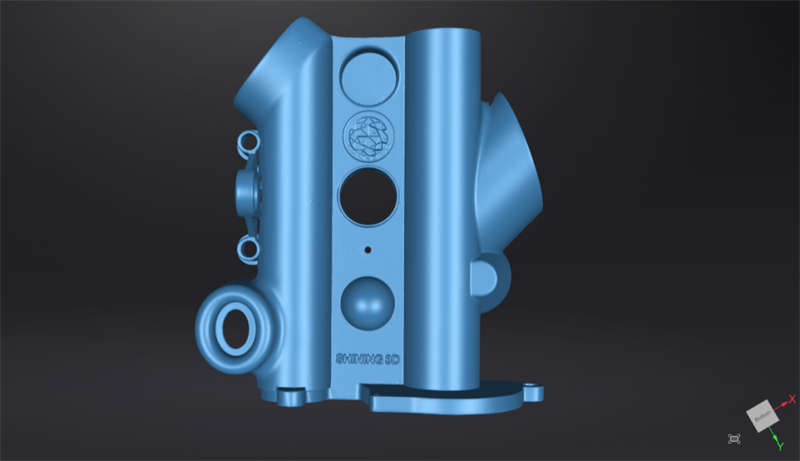
-
Algorithm
From calibration to data processing, algorithms are essential to the capture of 3D information. The precise reconstruction of the scanned item is ensured by a challenging set of mathematical calculations. Another crucial step in the process is calibration, which guarantees the scanner’s accuracy and provide the information needed for the algorithm to function properly.
-
Angle of scanning
To collect precise and comprehensive 3D data, it is essential to consider the scanner’s angle in relation to the object being scanned. The scanner should ideally be placed as perpendicular to the item as is practical. By placing the scanner in this location, it can extract markers more precisely and produce 3D data that is more accurate.
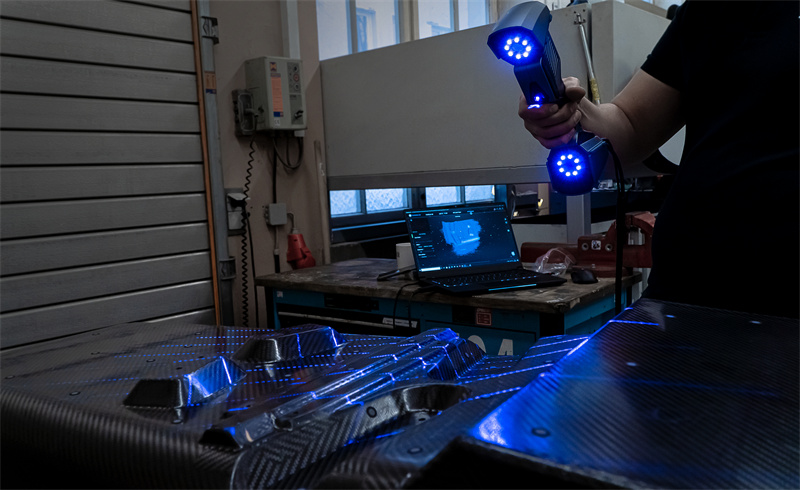
Scanning with FreeScan UE
Volumetric Accuracy
The degree to which a measured value and its true value are inside a certain measuring space is known as volumetric accuracy. A device’s volumetric accuracy, for instance, would be 0.02 mm + 0.04 mm per metre if its accuracy was 0.02 mm and the deviation increased by 0.04 mm per metre.
When scanning a larger object, the cumulative error is increased. Such variances are not insignificant, but there are scanning techniques like photogrammetry and global labelling that can assist minimise inaccuracies.
Global markers
In order to allow algorithms to optimise accuracy and collect more exact data, we can first scan the global markers before scanning the point cloud, which will ultimately improve volumetric accuracy.
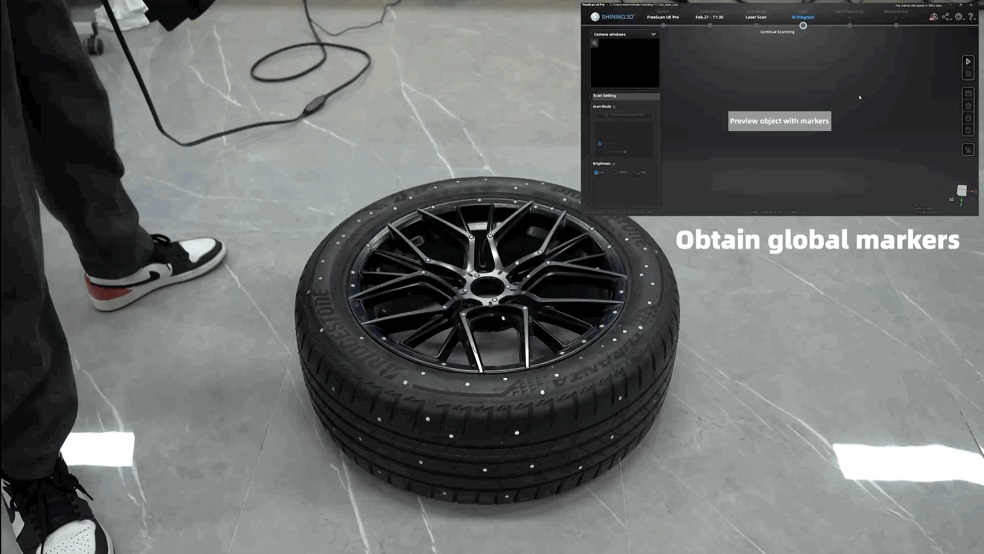
Photogrammetry
Global marker data can have their accuracy improved via photogrammetry. Depending on the size of the scanned object, we can import the appropriate scale bar files and set matching scale bars close to the object before scanning. The measurement of large parts in industrial applications that demand high accuracy is typically appropriate for photogrammetry. Global markets are inferior to photogrammetry among the two techniques.

Scanning Airplane Models Using Photogrammetry
Click on the following link Metrologically Speaking to read more such blogs on Metrology.


